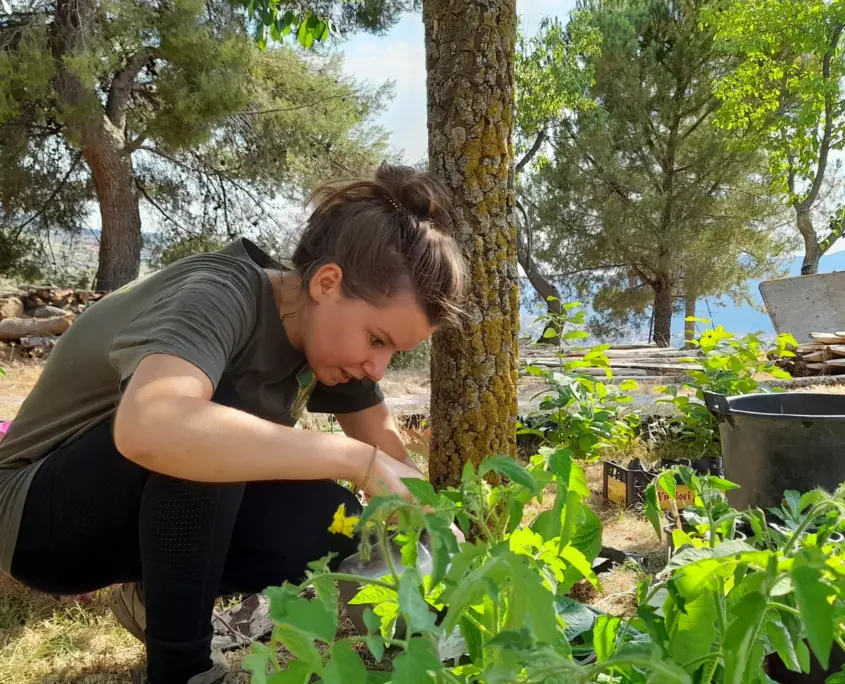Humus per la Biosfera – “Terra Preta” for Carbon Sequestration

In various experiments we explore the practicability of Terra Preta as a climate and fertility solution in the smallholder agriculture in Sicily.
The Etna surrounding valleys are rich in fruit and olive tree cultures pruned every year. The huge amount of tree pruning is often burnt directly on site and causes high climate emissions. Producing “Terra Preta”, an ancient native American black earth, we turn the negative effect into a positive one by binding carbon in charcoal through pyrolyzing the tree pruning, putting it into the soil and removing it from the atmosphere over several thousand years.
To become Terra Preta, the charcoal gets enhanced with animal manure and then provides the farmer with a nutrient and water buffer in the soil, which is particularly beneficial in dry periods.
Together with our international volunteers, we experiment simple techniques of pruning carbonization in order to give practicable advises for implementation on smallholder farms: Pyrolysis in a hollow and in a “KonTiki” made from an old cysterne.
The volunteers and student trainees measure the effect of fertility and water holding capacity of selfmade Terra Preta on salad and tomatoes. The results are on www.terrebiosfera.org
We are about to continue experiments and analyze the coal for spreading this climate solution within our farmer’s and NGO’s network. We want to exchange information and ideas and encourage others to include this carbon storage method into their annual pruning work.
[Calculation from IWB Basel: One kilogram of natural wood stores 0.9 kilograms of CO2 equivalent. Of this, 0.4 kilogrammes are released during pyrolysis. This one kilogramme of wood produces 170 grammes of plant charcoal, which can then be incorporated into the soil. This still stores 0.5 kilograms of CO2 equivalent for the next centuries. Vegetable carbon resists microbiological degradation processes in the soil for a very long time. A study with C14-labelled plant charcoal even concludes that it can last 2000 to 4000 years, depending on soil properties and local climate. This means that pyrolysis to plant carbon is actually a process that removes the greenhouse gas CO2 from the atmosphere in the long term.]
